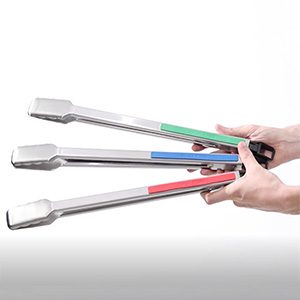Tips & Tricks | Safe Food Handling and Storage

Some basic food safety tips could be the difference between your best and worst grilling experience. While some of them may seem common sense, no doubt many of us are guilty of skipping one of these steps at one time. Whether it’s because we get distracted or aren’t aware of the risks, it’s always a good idea to brush up on safe food handling practices to ensure you’re following all the necessary procedures. The following tips will save you some guesswork at the grill and leave your guests happy and healthy. We’ll also include some links to essential grilling tools that help maintain a safe grilling environment.
Safe food preparation tips
Wash your hands before handling food, or use food-safe nitrile gloves.
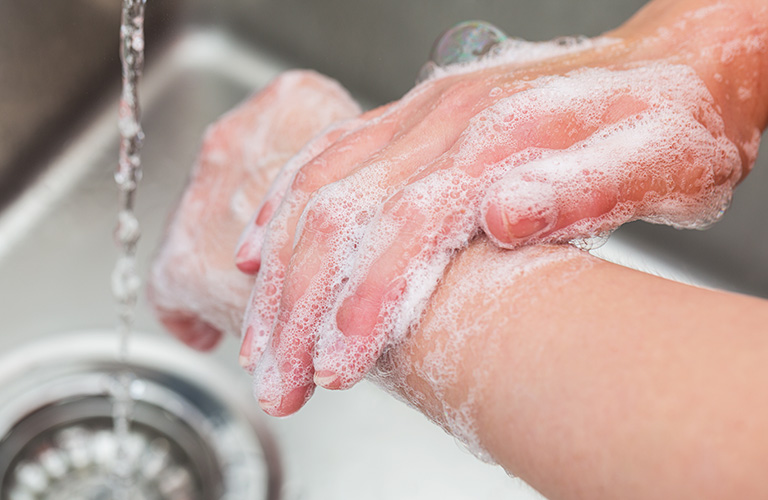
Clean hands are the starting point of any meal preparation. Consider using nitrile gloves with your grilling prep too. Nitrile gloves are my preferred method for handling meat of any doneness since I can peel them off and dispose of them when I move from handling chicken to beef. Wearing gloves will help you realize how often you touch your face while cooking. Avoid wiping your hands on your clothes – instead, grab a clean towel.
Avoid cross-contamination by cleaning your prep area after handling raw meat.

Prep raw meat first, completely clean your prep area and then move on to other items, e.g. vegetables that will be served raw. A benefit of prepping your meat first is that you can let it marinade in a fridge while you prepare everything else. Let your grillware or cutting boards dry completely before using them again.
Don’t leave meat at room temperature for too long.
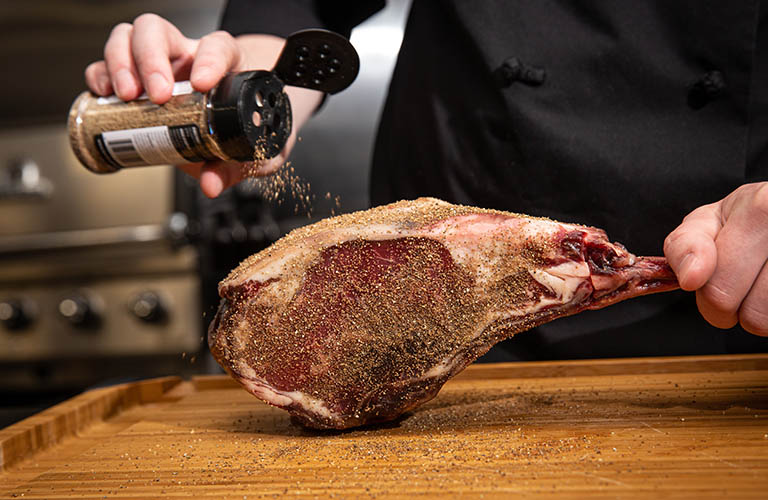
Letting meat come to room temperature before cooking is one of the great myths of grilling. Meat left out for too long can spoil. Instead, take it out of the fridge right before you are ready to prep and grill it – the results will be the same, and you avoid spoiling the meat.
Keep your grill clean
Burn off your grill, followed by a good brush before you cook on it. Smoke is a sign that there’s organic matter on your grill that needs to burn up before you start grilling. Season your grids once the grill is clean and ready for the next BBQ.
If you want to know more about how to clean your grill, follow our cleaning and seasoning guide.
Avoid cross-contamination on the grill
Here at Broil King HQ, we teach grillers the assembly line grilling method. It allows your raw items to travel from the left-side shelf (RAW) to the right-side shelf (COOKED), avoiding cross-contamination. Keep your raw and cooked meat separate by using different boards or dishes, and you should even use two tongs – one for raw meat and one for cooked meat. Colour-coded tongs (like this 3-Pack of Grilling Tongs) help you remember which tongs you’re using for what, e.g. the red tong for raw meat, the green tong for cooked meat.
You can also prevent cross-contamination of food through your marinade by only applying it to cooked meat that will be on the grill for another 20 min. Rather keep fresh marinade aside to baste the meat with while it cooks. The sauce that marinated your meat isn’t totally wasted – you can use it as a sauce by heating it to 150˚F (66˚C) or above for 10 minutes. A layer of foam will develop on top of the sauce – skim it off the surface.
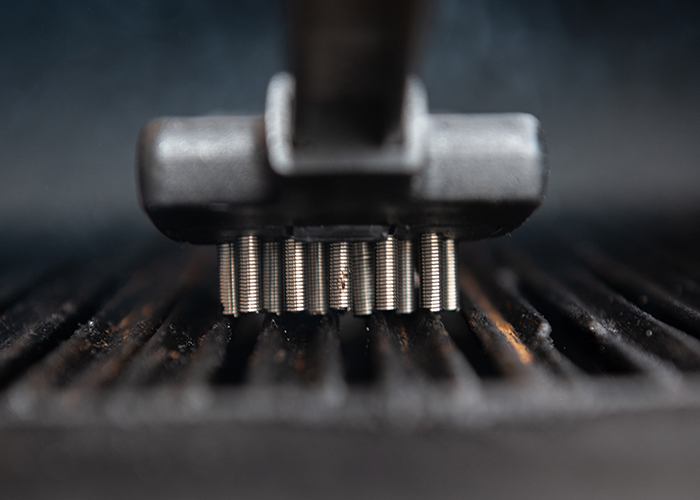

Avoid allergic reactions
If someone in your group is allergic to a menu item, consider cooking it last or on a separate grill to avoid cross-contamination. Also, serve these items on individual platters.
How long should I cook meat?
A thermometer is the best way to determine doneness and avoid serving undercooked meat. It’s also the best way to prevent the disappointment of serving an overcooked piece of steak. The Instant Read Thermometer is excellent for taking quick reads throughout your cook (but be sure you’re sanitizing the probe between each use). For longer cooks on larger cuts of meat (like a brisket or prime rib roast), the Side Table Thermometer is better suited to continuously monitor the temperature throughout the cook without having to open the lid and lose heat.
The below chart illustrates optimal doneness levels. You’ll notice ground meat has a higher doneness point than other meats. This is because ground meat needs to be cooked thoroughly to ensure it’s safe to eat.
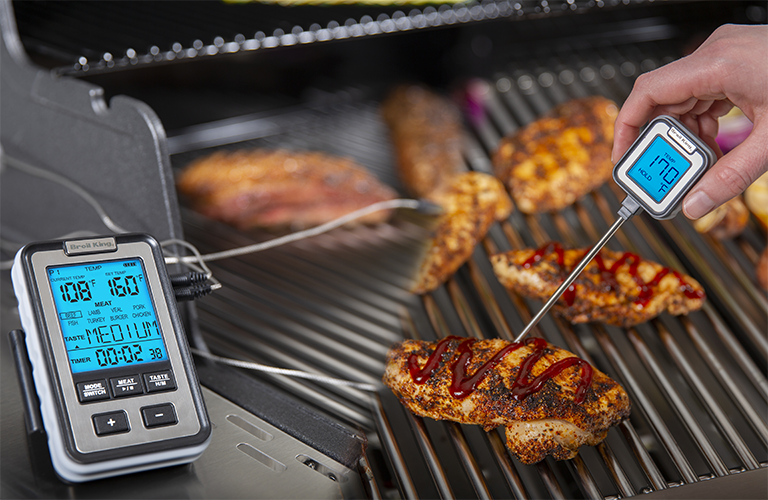
These internal temperatures have been approved by the US Food Safety Association (USFDA).
Food
Ground meat and meat mixtures
Fresh beef, veal, lamb
Poultry
Pork and Ham
Eggs and egg dishes
Leftovers and casseroles
Seafood
Type
Beef, pork, veal, lamb
Turkey, chicken
Steaks, roasts, chops
Rest time: 3 minutes
All Poultry (breasts, whole bird, legs, thighs, wings,
ground poultry, giblets, and stuffing)
Fresh pork, including fresh ham
Rest time: 3 minutes
Precooked ham (to reheat)
Note: Reheat cooked hams packaged in USDA-
inspected plants to 140°F
Eggs
Egg dishes (such as frittata, quiche)
Leftovers and casseroles
Fish with fins
Shrimp, lobster, crab, and scallops
Clams, oysters, mussels
Internal Temperature (°F)
160˚F
165˚F
145˚F
165˚F
145˚F
165˚F
Cook until yolk and white are firm
160˚F
165˚F
145˚F or cook until flesh is opaque and separates easily with a fork
Cook until flesh is pearly or white and opaque
Cook until shells open during cooking
How to safely serve food
When you remove your cooked items from the grill, they will release juices. A cutting board with a moat (like the Bamboo Serving Board) will prevent them from running off the board and onto your table.
Many household cutting boards are made for food prep and not service. Softwood cutting boards absorb juices and might give off old flavours, ruining the roast you just put it on to serve. If re-using a cutting board used during prep to serve your cooked food, it is imperative that it has been thoroughly scrubbed and dried to prevent any contamination. If possible, use two separate boards for prep and service. The Wood Fibre Cutting Board is great for preparing foods due to its rubberized corners that prevent slipping and the smooth finish, which makes cleanup easier.
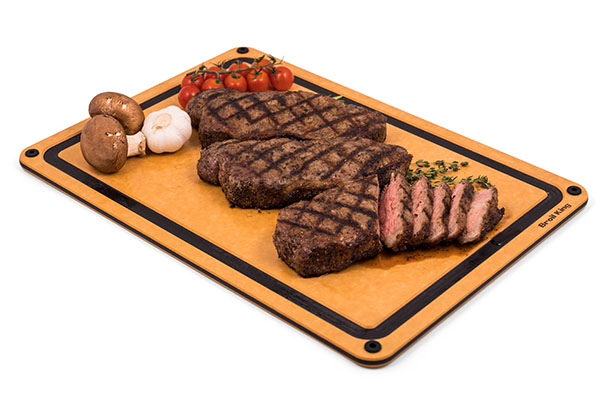
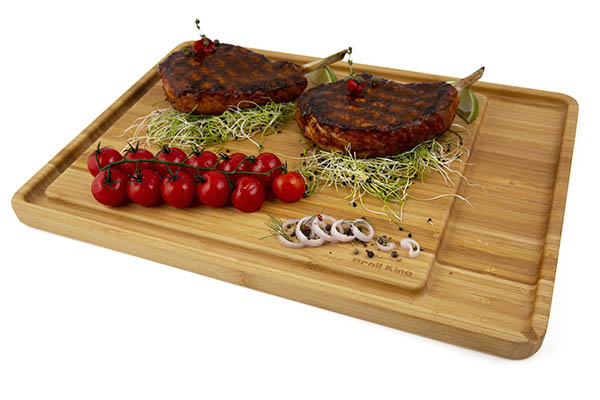
How to safely serve food
Your grill makes reheating food easy. It keeps your leftover pizza crisp and fresh, unlike the soggy slice you get after reheating in a microwave. It’s important to take your time when reheating food. Leftovers have already been cooked, and you just want to bring them safely back to an edible temperature. Reheated items need to hit and maintain 165˚F (74˚C) or come to a rolling boil in the case of soups and sauces.
Once leftovers have been reheated and served, you can’t save them as leftovers again. Sadly there are no second chances for leftovers. Make sure you’re portioning your food to be reheated to ensure you do not waste any leftover food.

